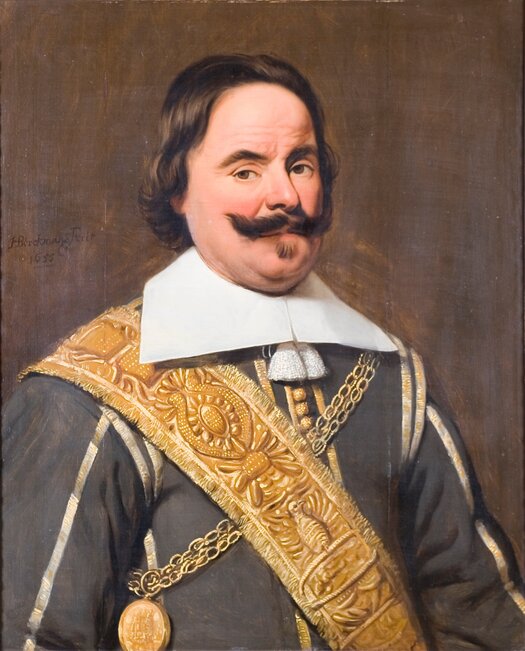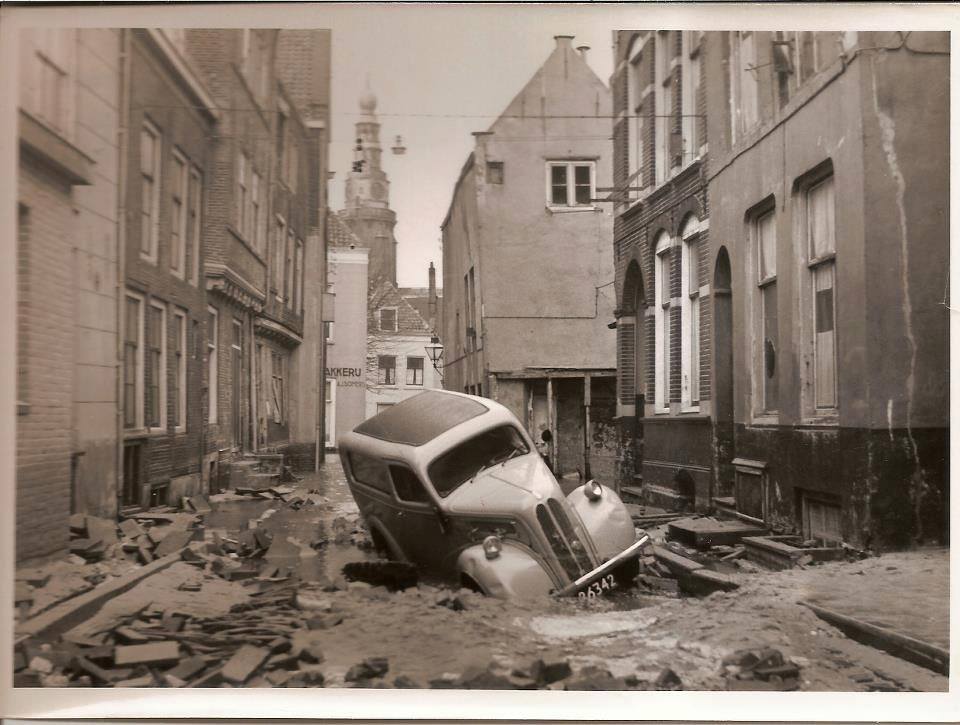
strong connection to the sea
Along the picturesque coastline of the Netherlands, Vlissingen stands as a charming maritime town that effortlessly blends history, culture, and natural beauty. With its strategic location on the southern shores of the North Sea, Vlissingen has long played a crucial role in maritime trade and defense.
The town’s rich history is evident in its architecture, with well-preserved historic buildings reflecting various periods, from medieval to modern times. The medieval fortress of Het Arsenaal, once a naval depot, now houses a maritime theme park that offers visitors a glimpse into the town’s maritime heritage.
Vlissingen’s expansive beaches and vibrant promenade attract tourists and locals alike. The town’s strong connection to the sea is embodied in the annual Tall Ships Race, where majestic sailing vessels from around the world dock in the harbor, showcasing a dazzling spectacle of maritime traditions.
For art enthusiasts, Vlissingen offers the MuZEEum, an interactive museum that delves into the town’s maritime past and its relationship with the sea. The museum’s three distinct locations explore maritime history, the life of a sailor, and Vlissingen’s role during the Dutch Golden Age.
Whether strolling along the bustling boulevards, enjoying panoramic sea views, or immersing oneself in maritime history, Vlissingen presents an enchanting blend of old-world charm and contemporary allure. Its maritime legacy, combined with a vibrant cultural scene, makes Vlissingen a captivating destination for those seeking to explore the heart and soul of the Dutch coast.
MICHIEL DE RUIJTER
Michiel de Ruyter was born on 24 March 1607, at eight o’clock in the morning, in Vlissingen. He was the son of sailor Adriaen Michielszoon and Alida Jansdochter, the fourth child in a series of eleven, most of whom died young.
He worked as a ten-year-old on a line track that ropes for the rigging of sailing ships. He was a swagger and a fighter. At the age of eleven, on August 3, 1618, he went to sea for the first time as a high-boatman’s boy.
By his own admission, that had been his deepest wish from an early age.
He was captured wounded by the Spaniards on a later journey, escaped at A Coruña and walked back to the Netherlands with a few comrades.
In 1622 he sailed for the first time as a high boatman on a warship.
In 1633, De Ruyter enlisted as helmsman on a whaler, the Green Lion, of the Nordic Company, destined for Jan Mayen. The journey lasted from 8 May to 8 September 1633. In 1635 he sailed on the same ship, still as a mate, to Spitsbergen. He was also active on the route to South America.

In 1652 the First Anglo-Dutch War broke out. The Admiralty of Zeeland appealed to De Ruyter’s sense of duty and he returned, albeit reluctantly, to naval service on 29 July 1652.
Most famous achievement is the Voyage to Chatham in June 1667. At the time of his death, De Ruyter was regarded throughout Europe as the greatest admiral of his time. During his career he was decorated by the admiralties of the Republic and by foreign princes. In Denmark he was raised to the peerage (knight, 1660) and in Spain he was posthumously “Hertog de Ruyter”. In addition, he received three gold Ambassador medals on heavy gold chains. These Reward medals were awarded by the States General after naval battles won. In addition, there were gifts, such as pensions, a diamond-encased portrait of the French king, a golden sabre, a golden cup and an atlas of Blaeu.

The fishing hamlet that originated around 620 AD at the mouth of the Scheldt has grown into the third most important port in the Netherlands in its 1400-year history.
The counts of Holland, Flanders and Zeeland had the first ports dug. Over the centuries, Vlissingen developed into a hub for fishing, especially herring fishing, trade, cape shipping and slave trade.
At the beginning of the Eighty Years’ War, the city was in Spanish hands. On April 6, 1572, Vlissingen was the second city (after Den Briel) to liberate itself from the Spaniards Unlike Den Briel, Vlissingen was not liberated by the beggars but by its own inhabitants. In 1585 Vlissingen became English property: Queen Elizabeth obtained it as collateral, together with Ostend, Brielle and Fort Rammekens, in exchange for military and financial aid in the fight against Spain.
Vlissingen was also in French hands for a while under Napoleon, before he incorporated the whole of the Netherlands. At that time, the city did not belong to the Kingdom of Holland.
Vlissingen is a lively seaside resort, a popular destination that attracts thousands of tourists every year. In addition to its great location by the sea, Vlissingen also has numerous cozy beach pavilions and a varied nightlife.
WESTERN SCHELDT
The Western Scheldt is a relatively young estuary. The original Scheldt course and mouth took place first via the Flemish valley northwest of Ghent, later via the Kreekrak and the Oosterschelde to the North Sea.
On the side of the North Sea in the early Middle Ages there was only a smaller sea arm or inlet, which is listed as Sincfal in the historical sources. Further east, near the current Perkpolder, was a peat river, called the Honte, which flowed eastwards to the Scheldt. Storm surges in the early 12th century connected this estuary and peat river. In the centuries that followed, this connection became ever wider, with numerous floods occurring. This is how the Western Scheldt was created as an estuary between the Scheldt and the North Sea. Even after the Scheldt had made contact with the Western Scheldt, it took many centuries before it was suitable for shipping traffic to Antwerp. It was not until the end of the 15th century that Antwerp was reached via the Western Scheldt. This now also became the main discharge of the Scheldt. In Vlissingen there is a beautiful view of the Western Scheldt from the boulevard and the beach.
Vlissingen during World War II
Vlissingen also played a crucial role in the course of the Second World War in the Netherlands. The strategic location at the mouth of the Westerschelde and the presence of a shipyard, airport and ports meant that the city is one of the most bombed cities in the Netherlands.
Vlissingen had to deal with about 75 bombings and hundreds of air raids. This could vary from a few planes to dozens and from a few bombs to hundreds. 1,353 houses were destroyed and 5,246 houses (sometimes severely) damaged.
On November 3, 1944, the city of Vlissingen was liberated, only one house was undamaged. There were 3,000 of the normally 20,000 inhabitants in the city left, the rest had fled or been evacuated.


The Jakob jar on the coat of arms stands for the word flessche, from which the name Vlissingen would originate. With this, the coat of arms of Vlissingen would be a talking weapon.
Willebrordus gave 12 beggars to drink in Vlissingen and the bottle from which they drank did not run out. Eventually he left again and left his bottle, he also noticed that the beggars did not want to listen to his gospel. He is said to have named the place Flessinghe.
flood disaster in Vlissingen
The disaster was the result of a combination of severe storms from a northwesterly direction, with an unfavorable time of flood and spring tide. Many dikes proved unable to withstand the combination of spring tides and a severe northwesterly storm, in which a total of more than 1800 people drowned. From half past two, the residents in the disaster area were warned by the police of the impending doom. At half past four at night, the water level was already more than 2.5 meters higher than at a normal spring flood. The water flowed in large quantities over the walls at the Nieuwedijk and the Bellamypark to the lower streets behind it. In the streets around the Nieuwstraat and the Walstraat, but also in the vicinity of the Palingstraat, there was 1.5 to 2 meters of water in a short time.











